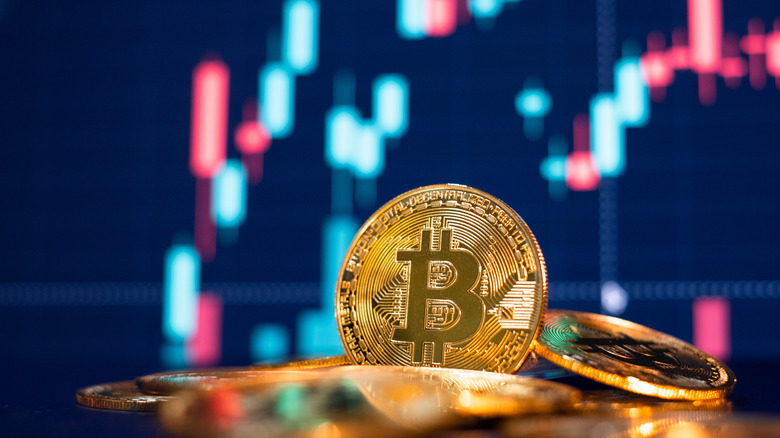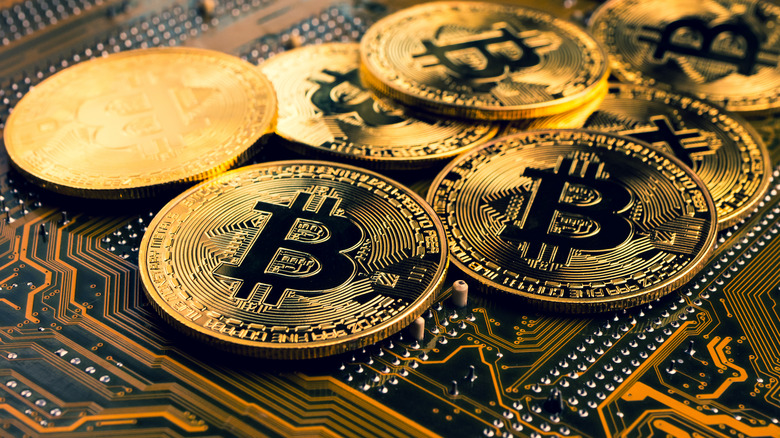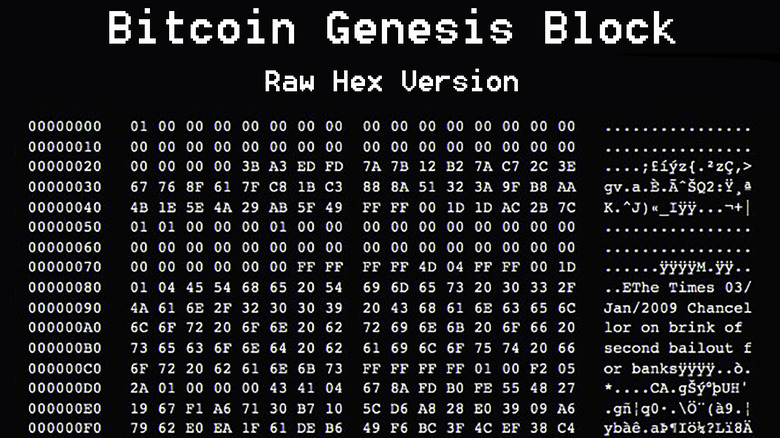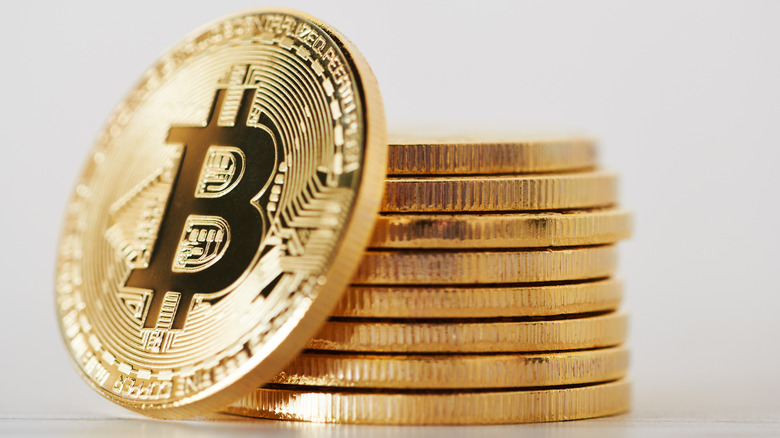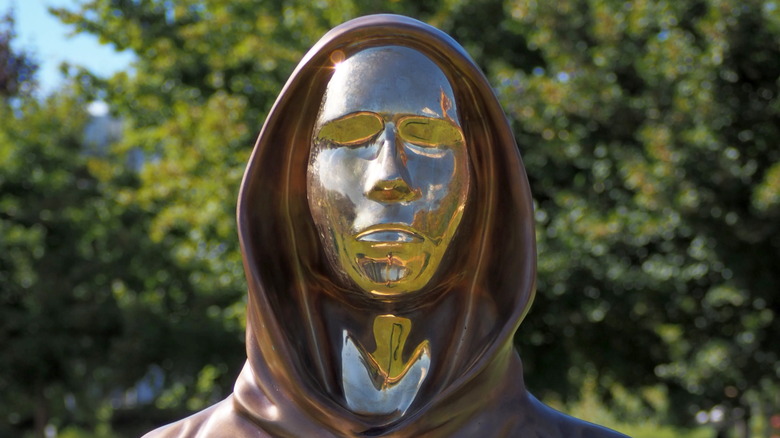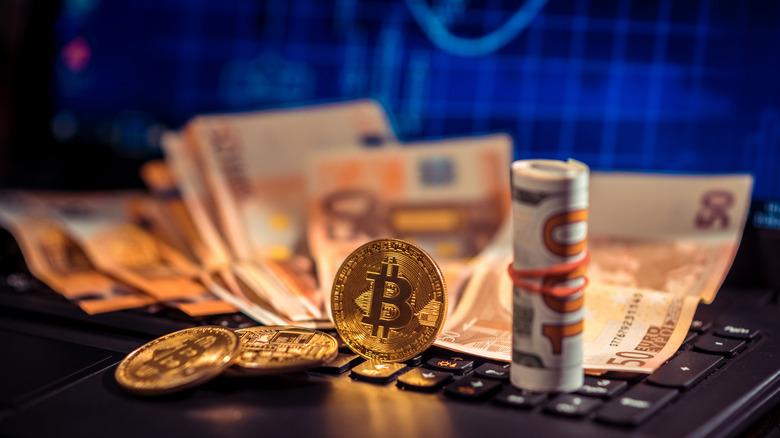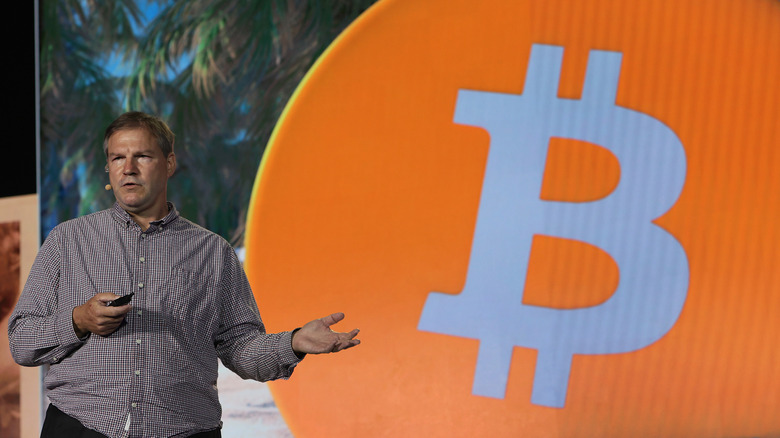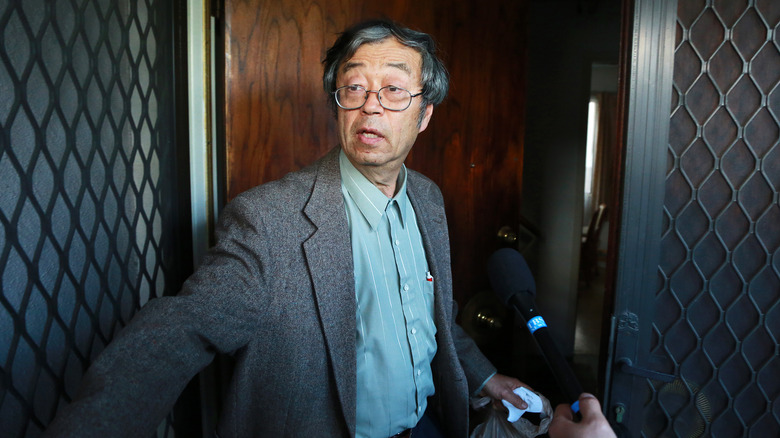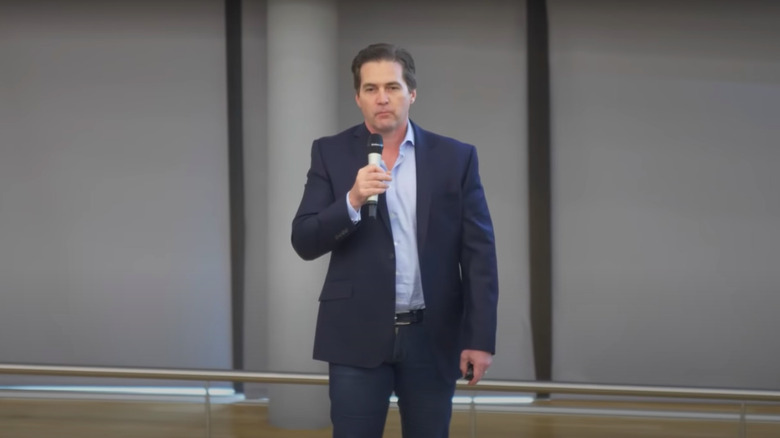The Mystery Behind Bitcoin Explained
Considering the global phenomena that Bitcoin has become, with Bitcoin mines popping up in Kazakhstan, Iran, Malaysia, Russia, and the United States, you'd think that the inventor of Bitcoin would be well-known and rushing off to space with every other billionaire. Instead, the identity of the creator of Bitcoin remains a secret. And it's unclear if anyone outside the creator knows the truth.
Some claim that the invention of Bitcoin was inspired by the 2007-2008 financial crisis. Others have tried to figure out the identity of its creator by following linguistic patterns. And at least one person has come out to claim the invention of Bitcoin as their own, although this has been cast into serious doubt.
But then what's the real story behind this enigmatic inventor and the currency that has been described as both the "savior of global economy" and simply a reproduction of current inequalities? This is the mystery behind Bitcoin explained.
The creation of bitcoin
In 1998, a computer engineer named Wei Dai published an essay on an "anonymous, distributed electronic cash system" he referred to as "b-money." But although b-money was never officially created, on August 22, 2008, Dai received an email expressing interest in the idea from someone who called themselves Satoshi Nakamoto. That month, Nakamoto had also registered the domain name bitcoin.org for the first time.
Nakamoto wrote that he was also working on a paper "that expands on your ideas into a complete working system," per CoinMarketCap. A little over two months later, on October 31, 2008, Nakamoto posted a message on a cryptography mailing describing an "electronic cash system that's fully peer-to-peer, with no trusted third party." This paper, titled "Bitcoin: A Peer-to-Peer Electronic Cash System" was the very first description of Bitcoin.
In the whitepaper, Nakamoto outlines how the electronic payment system would work using "cryptographic proof instead of trust" and would get rid of the need to use a financial institution. Nakamoto also claimed that by operating on cryptographic proof, "transactions that are computationally impractical to reverse would protect sellers from fraud, and routine escrow mechanisms could easily be implemented to protect buyers." The whitepaper also outlined how blockchain would be used to maintain the ledger of transactions.
Bitcoins and blockchains
Blockchains were invented in 1991 by cryptographers Stuart Haber and Scott Stornetta and were originally used to verify whether a digital document had been altered or not. Using a cryptographic hashing algorithm, they essentially created a digital notary, according to Vice, which was then posted in the New York Times rather than a public digital ledger.
Nakamoto was clearly inspired by Haber and Stornetta's work, considering that almost half the papers cited in Nakamoto's Bitcoin whitepaper were written by Haber and Stornetta, and described a similar process for recording Bitcoin transactions. But according to The New York Times, Nakamoto didn't even use the term "blockchain" at the time. The name comes from the fact that transactions are maintained in "blocks" of data and "chained" together with cryptographic hashing algorithms. "That makes it hard to go back and rewrite or monkey with the older records."
On January 3, 2009, Bitcoin was launched and the first 50 Bitcoins were mined, also known as the genesis block, setting the blockchain in motion. CoinMarketCap also notes that the first block's data included a headline from The Times of London that read "Chancellor on brink of second bailout for banks." Nakamoto fixed the supply of Bitcoins at 21 million. Before long, 0.00000001 of a Bitcoin (BTC) was known as "Satoshis." And according to New Scientist, it's estimated that every Bitcoin will be in circulation by 2140.
Bitcoin mining
On August 6, 2010, a member of the Bitcointalk forum posted about some concerns they had regarding the energy input needed to sustain Bitcoin. In a post titled "Bitcoin minting is thermodynamically perverse," the user gridecon wrote that there is a "fundamental perversity of wasting large amount of energy and computations in generating the winning blocks for the minting process," per CoinCapMarket. Essentially, in a very simplified sense, in order to earn Bitcoins, people have to add to the blockchain, which requires "comput[ing] the correct random numbers that solve a complex equation the blockchain system has generated" (via PCMag). With more computation energy, the easier this process, now known as Bitcoin mining, becomes.
But the energy needed to power this mining doesn't come out of thin air. The New York Times reports that China recently banned Bitcoin mining because the energy needed for mining was "ultimately responsible for the revival of coal mines." The hardware equipment used for Bitcoin mining also quickly becomes outdated and creates more waste.
In their original post, gridecon went on to point out that "bitcoin may actually be 'destroying wealth' in the sense of wasting energy producing a digital object less than the resources invested in it." And in 2021, the amount of energy needed to mine one BTC was a $12,500 electricity bill.
Nakamoto steps aside
The first Bitcoin transaction took place between Nakamoto and computer scientist Hal Finney on January 12, 2009. According to Decrypt, Nakamoto sent Finney 10 BTC as a test, and although Bitcoin was still worth practically nothing at the time, as of January 2022 those 10 coins are worth over $412,000. Finney is also known for having made the "first-ever tweet" about Bitcoin on January 10, 2009. The first Bitcoin exchange occurred on December 5, 2009, where $1 was equivalent to 1,309.03 BTC.
Initially, the Bitcoin usage was slow and mostly through barters, but in June 2010, software developer Gavin Andresen launched The Bitcoin Faucet, which gave five Bitcoins to anyone who visited the site. Nakamoto was impressed and reportedly responded in a forum saying, "Excellent choice of a first project, nice work." And by July 2010, BTC was priced between $0.0008 to $0.08 per coin.
Over the following year, Nakamoto started stepping back from the Bitcoin project, and CEF writes that by mid-2011, Nakamoto had given over control of the source code repository and network alert key to Andresen. Nakamoto's "final confirmed correspondence" to Andresen reads, "I wish you wouldn't keep talking about me as a mysterious shadowy figure, the press just turns that into a pirate currency angle. Maybe instead make it about the open source project and give more credit to your dev contributors; it helps motivate them," per CoinMarketCap.
Who is Satoshi Nakamoto?
Throughout all of this, the identity of Satoshi Nakamoto has remained a mystery. According to The New Yorker, Nakamoto claimed to be a Japanese man in his 30s, but before the invention of Bitcoin, "there was no record of any coder with that name."
Many have tried to figure out Nakamoto's identity through deduction. One quality that's often noted is the fact that Nakamoto's online communication occurred in English, where he reportedly "made only a few typos." Nakamoto also largely uses British English spellings and British idioms, although the first post announcing Bitcoin was written using American English spelling. "But after that a British style appeared to flow naturally."
Wired also reports that Stefan Thomas, a Swiss coder, tracked the time stamps for all of Nakamoto's Bitcoin forum posts and showed that there was always a lull between 5 a.m. and 11 a.m. Greenwich Mean Time, the time zone for London, England. Because this lull occurred every day, it suggested that this was when Nakamoto was asleep rather than simply being a lull due to work.
How wealthy is Nakamoto?
It's estimated that between January and July 2009, Satoshi Nakamoto mined over 1 million BTC. According to Decrypt, not only does this make Nakamoto "the most prolific miner in Bitcoin history," but he could've mined even more if he wanted to. He reportedly "deliberately held back, curbing his hashrate." However, nobody knows exactly how many Bitcoins Nakamoto actually has, and the estimate of over 1.1 million BTC was proposed by cryptocurrency researcher Sergio Demian Lerner.
If Nakamoto truly does have 1.1 million BTC, that would come out to over $41 billion as of January 2022. This makes Nakamoto the wealthiest Bitcoin owner and one of the 40 wealthiest people on the planet. However, there's no evidence that Nakamoto has ever moved any of his immense wealth.
Although many people have claimed to be the person behind the Nakamoto pseudonym, as of January 2022, nobody has proved that they have "the private keys to any of the addresses thought to be owned by Satoshi," which would be necessary to move the BTC. This would be considered the best proof of Nakamoto's identity.
Possible identities
The search for the identity of Satoshi Nakamoto has been described as an "online Ponzi scheme." Some believe that Hal Finney, who was part of the first Bitcoin transaction, was actually Nakamoto himself. But Business Insider reports that throughout his life, Finney repeatedly denied the claim that he was Nakamoto and maintained that his involvement was "only ever secondary." Unfortunately, Finney died in 2014 from ALS at the age of 58 and stated in one of his final posts that Nakamoto's identity "remained a mystery to him." So if Finney really was Nakamoto, he may have taken that identity to the grave with him.
Others have pointed to Nick Szabo, who created the cryptocurrency "bit gold" in the late 1990s, as Nakamoto's true identity. The New York Times reports that "Szabo is nearly as much of a mystery as Satoshi," but he also has repeatedly denied being Nakamoto. Meanwhile, linguistic researchers who studied Nakamoto's writings claim that "the number of linguistic similarities between Szabo's writing and the Bitcoin whitepaper is uncanny."
It's unclear whether the real Nakamoto would even admit to it. Coinbase, a U.S. digital currency trading platform, claimed that if Nakamoto was ever revealed, it could destabilize the entire cryptocurrency market. In their filings to go public, Coinbase cited "the identification of Satoshi Nakamoto ... or the transfer of Satoshi's Bitcoins" as a risk factor.
Misidentifications
After Gavin Andresen took over the reins of Bitcoin from Satoshi Nakamoto, many believed that his "smooth ascent" meant that this was Nakamoto's true identity. But according to the MIT Technology Review, Andresen has always denied being Nakamoto. "I am not Satoshi Nakamoto; I have never met him; I have had many e-mail conversations with him ... Nobody knows who he is, I think." Andresen's style is also distinct from Nakamotos when it comes to "hundreds of forum posts, e-mail messages, and lines of code," so it's relatively unlikely that the two are the same person.
In March 2014, Newsweek published an expose claiming that they had identified Dorian Satoshi Nakamoto as the real Nakamoto. In response, Dorian Nakamoto released a statement saying "I did not create, invent or otherwise work on Bitcoin. I unconditionally deny the Newsweek report," per The Atlantic. He also claimed that the false report harms his "prospects for gainful employment ... [and] has been the source of a great deal of confusion and stress for myself, my 93-year-old mother, my siblings, and their families."
Former SpaceX intern Sahil Gupta has also suggested that Elon Musk could be Nakamoto, but Musk denied this. In 2022, Musk also stated that he believed Szabo was the person behind the Nakamoto identity, writes ScreenRant.
Dead or CIA agent?
Several people have suggested that whoever the real Satoshi Nakamoto is, he might already be dead and that waiting for the revelation of his identity is futile. The untouched Bitcoin wallet is considered to be evidence of this claim, since it's hard for many to believe that such an immense wealth would be left alone for so long. CCN writes that CEO of BitMEX Arthur Hayes, which is a BTC margin trading platform, is among those who believe that Nakamoto is probably "already dead."
There's also the possibility that the pseudonym Nakamoto is meant to represent a group of cryptographers. In this case, "it would be even more difficult to prove the identity of the creator of bitcoin."
According to Protocol, one conspiracy theory even claims that Nakamoto is a CIA agent. Meanwhile, another one posits that Nakamoto left Bitcoin because of Gavin Andresen's decision to talk about Bitcoin at a conference at the CIA headquarters. But while the true identity of Nakamoto remains unknown, some people have gone out of their way to claim that they are in fact the real Satoshi Nakamoto.
A potential unmasking
On May 2, 2016, the BBC reported that Australian computer scientist and businessman Craig Steven Wright had come forward to identify himself as Satoshi Nakamoto. Wright also claimed that he could provide proof to back up his assertion. However, according to The Guardian, many were soon calling Wright's claim a scam, pointing at the fact that the signature Wright used to "prove" his identity was in fact a publicly available signature created by Nakamoto in 2009.
Wright would later post to his website that he couldn't actually technically prove his identity, and wrote, "As the events of this week unfolded and I prepared to publish the proof of access to the earliest keys, I broke. I do not have the courage. I cannot," per Vox. But Wright has never offered up any more evidence to prove that he's the creator of Bitcoin. Furthermore, most of Wright's rhetoric is the exact opposite of Nakamoto's, writes Bitcoin Magazine. For example, Wright once claimed, "At no point have I said that Bitcoin is a cryptocurrency," despite the fact that Nakamoto referred to Bitcoin as a cryptocurrency several times.
In 2018, Wright was involved in a lawsuit in Florida that could've forced him to reveal if he actually had the Nakamoto fortune he claimed to have. But after the jury rejected the Kleiman's estate's claim in 2021, CoinDesk reports that Wright still had to pay $100 million in damages after being found guilty of one count of theft of intellectual property.
Claiming to be Nakamoto
In 2021, the Cryptocurrency Open Patent Alliance (COPA) also filed a lawsuit against Craig Steven Wright in the United Kingdom, claiming that Wright forged documents in his attempts to prove that he's really Satoshi Nakamoto. According to CoinDesk, COPA took on this fight in response to Wright's own "itchy legal finger," and the rounds of cease-and-desist letters he's sent to various Bitcoin core developers. Wright also reportedly tried to file a copyright claim with the U.S. Copyright Office over the original Bitcoin code.
As a result, the COPA has taken matters into their own hands, with one spokesperson saying that "COPA is stepping in on behalf of the community to protect those small parties, particularly Bitcoin developers, who are essential to the community but don't have a ton of resources."
In January 2022, The Register reported that the High Court of Justice in London ruled that the lawsuit will go ahead in full after Wright attempted to have parts struck out. And if the High Court rules that Wright's proof of being Nakamoto are truly forgeries, this will negate any copyright ownership Wright claims to have.
The future of Bitcoin
Upon leaving the Bitcoin community, Satoshi Nakamoto gave one final message to the cryptocurrency community. Bitcoin News writes that on December 12, 2010, Nakamoto reportedly told developers that they had to do more work on denial-of-service (DoS) attacks. Nakamoto also noted that "the software is not at all resistant to DoS attack. This is one improvement, but there are still more ways to attack than I can count."
Nakamoto's message was well-advised, but the Bitcoin community has continued to deal with its fair share of DoS attacks. In July 2021, Bitcoin.org was hit by an "absolutely massive DDoS attack" that also came with a ransom demand, according to Cointelegraph. The cryptocurrency exchange companies Binance, OKEx and Bitfinex have also all reported DDoS attacks in the past.
After this final message, Nakamoto was never seen on the Bitcoin forum again. And after a handful of email correspondences, Nakamoto disappeared. Since then, there have been predictions about the future of Bitcoin ranging from losing "fundamental value" to a $100,000 valuation. But it seems that the future of Bitcoin is ultimately as uncertain as Nakamoto's identity.
